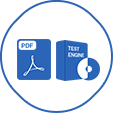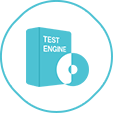What Is Internal Control Evaluation?
Internal control evaluation is the process of assessing an organization’s internal controls to ensure they are adequate and effective in mitigating risks, ensuring compliance, and achieving objectives.
Why Is Identifying Potential Risks the First Step?
The entire purpose of internal controls is to mitigate risks. Therefore, before evaluating the controls, you need to identify the risks they are meant to address.
Once risks are identified, the organization can evaluate whether the existing controls are adequate and effective in mitigating those risks.
This approach aligns with risk-based frameworks like theCOSO Internal Control Framework, which emphasizes risk identification as the foundation for effective controls.
Why Other Options Are Incorrect:
A. Identifying the effectiveness of management activities:This is part of control evaluation but occurs after risks and controls are identified.
B. Assessing the adequacy of controls:Controls cannot be assessed until the risks they address are identified.
C. Documenting how transactions or events are processed:While this step is important, it comes later in the process, after risks and controls are identified.
References and Documents:
COSO Internal Control Framework:Identifies risk assessment as the foundation for designing and evaluating controls.
GAO Standards for Internal Control (Green Book):Highlights risk identification as the first step in the control process.








